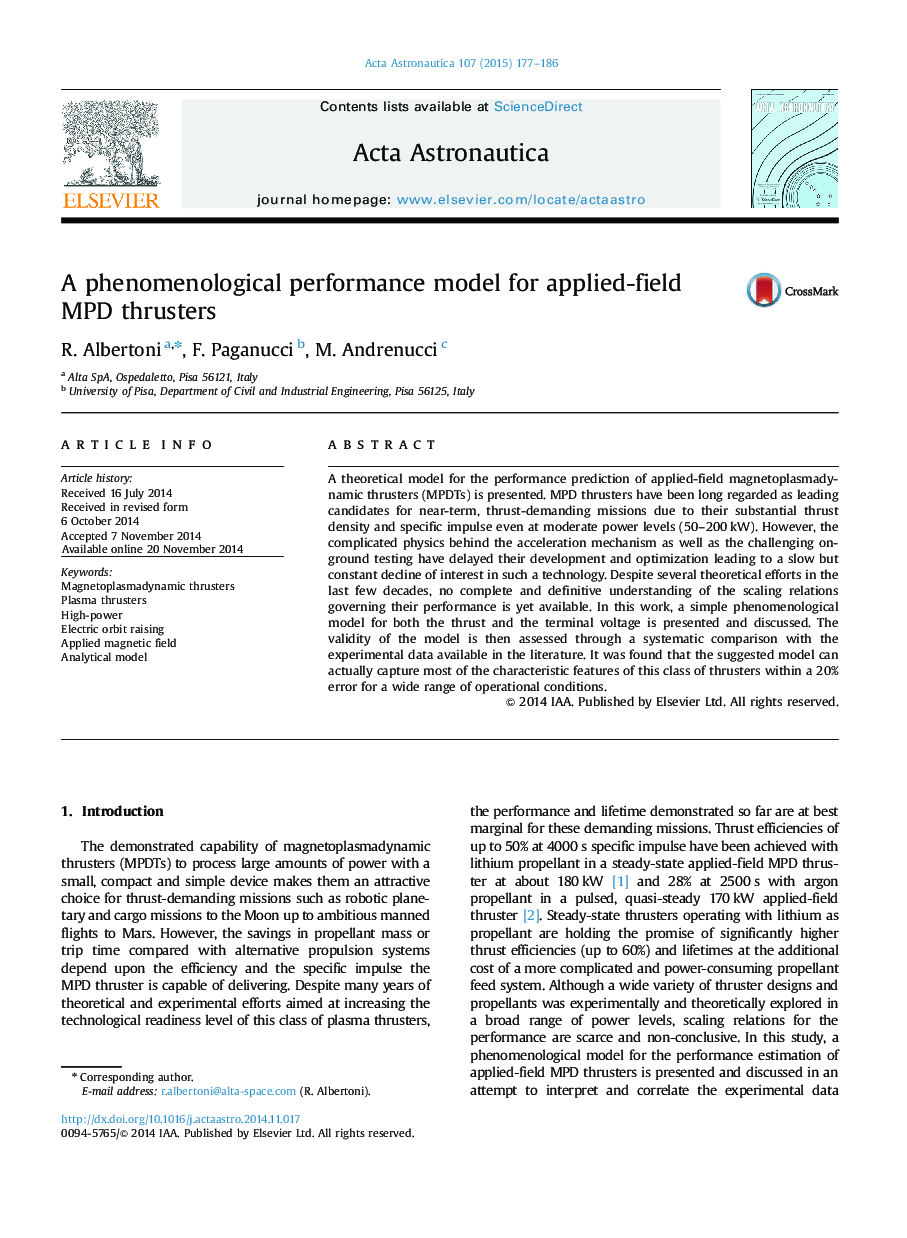| Article ID | Journal | Published Year | Pages | File Type |
|---|---|---|---|---|
| 1714481 | Acta Astronautica | 2015 | 10 Pages |
Abstract
A theoretical model for the performance prediction of applied-field magnetoplasmadynamic thrusters (MPDTs) is presented. MPD thrusters have been long regarded as leading candidates for near-term, thrust-demanding missions due to their substantial thrust density and specific impulse even at moderate power levels (50-200Â kW). However, the complicated physics behind the acceleration mechanism as well as the challenging on-ground testing have delayed their development and optimization leading to a slow but constant decline of interest in such a technology. Despite several theoretical efforts in the last few decades, no complete and definitive understanding of the scaling relations governing their performance is yet available. In this work, a simple phenomenological model for both the thrust and the terminal voltage is presented and discussed. The validity of the model is then assessed through a systematic comparison with the experimental data available in the literature. It was found that the suggested model can actually capture most of the characteristic features of this class of thrusters within a 20% error for a wide range of operational conditions.
Related Topics
Physical Sciences and Engineering
Engineering
Aerospace Engineering
Authors
R. Albertoni, F. Paganucci, M. Andrenucci,
